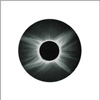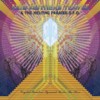- Administrator
- Albums and Singles

Australian guitarist Tim Catlin and American percussionist Jon Mueller's approach to their instruments is based on their shared interest in the vibration of material and the changes in sound that result in modifying those vibrations. Over a year in the making, Plates and Wires features a series of different situations involving guitars, gongs, snare drums, and bass drum, and their resonant effect upon one another. Plates and Wires was mastered by James Plotkin (Khanate/Phantomsmasher/Khlyst) and is released in an edition of 300 in a 10x10" package featuring artwork from painter Thomas Kovacich. Kovacich's practice of dragging paint with devices over large disused planks of furniture creates a visual cohesion with the layers of milky and gritty sounds heard within the recording.
Read More
- John Kealy
- Albums and Singles
Considering the gorgeous gatefold sleeve that is heavily inspired by the album art of Yes and the ominous King Crimson-esque intro to “Walrus,” it was disappointing that Boris’ take on The Beatles was not a progged out supernova. Even with Merzbow on board to add odd sounds like seagulls and his usual electronic flatulence, this version of “I am the Walrus” kept very close to the original. It ends up sounding like the band were just passing the time at rehearsal rather than reworking a classic. On the opposite side, “Groon” is equally disappointing. Atsuo’s drumming could form the foundations of a traditional Boris epic but Merzbow and the rest of the band do not build on Atsuo’s beats, instead they add a layer of noise that sounds like it was added as an afterthought. At the end of the day, there are so discs released regularly by both Merzbow and Boris that many of them are bound to be filler and Walrus/Groon is one such record.
Read More
Transcendent, esoteric. Skat like vocals govern the first track. The driving thumping train like rhythms collide with each other and derail with frivolity. Circle sounds like a well produced corner shop band that you might find playing in the streets of some foreign country. The entire CD hangs with a certain gloom that is in the over polished/produced songs that sound like, well, that sound like insanity! (I'm referring of course to the 5th track). It's clickety clak vocals are distributed among the jam session players recording sessions. There are intense moments of introspection that criss cross with absurdity. Madness should prevail if you listen to track 5 in its entirety. Welcome to Circle's most grossest.
The 2nd track is complex with polyrhythms and a vice like atmosphere to its sound. It sounds like they've been jonesing for a smoke this whole time but that none of the members of the band wanted to go to the store for their fix. The 5th track is absolutely bonkers. It drove this reviewer wild.
- Administrator
- Albums and Singles
 It is not a prerequisite to appreciate soccer or French star Zinedine Zidane's role in the modern game to enjoy Mogwai's work on this film's soundtrack, but Zidane the man and Zidane the film give the music context that will mean something more to fans of the game.
It is not a prerequisite to appreciate soccer or French star Zinedine Zidane's role in the modern game to enjoy Mogwai's work on this film's soundtrack, but Zidane the man and Zidane the film give the music context that will mean something more to fans of the game.
The pairing of Mogwai's typical melancholy with a sports-themed film didn't immediately make sense to me, especially after listening to the Zidane album and noting that it is entirely free of the huge, sweeping bombast that Mogwai added to the Kronos Quartet for their other recent film work, The Fountain's score. Zidane finds Mogwai at their restrained best as the band takes a central theme and works it through a number of cues that work beautifully as a stand alone album. The music is focused less on the quiet/loud dynamic that many Mogwai fans may expect, and more on the simple construction of a mood that matches the feeling that I guess many of us have about Zidane at the end of his career.
Most Americans, if they know of Zidane at all, know him more for one of the most egregiously unsportsmanlike moments ever televised than for his many years as one of soccer's brightest stars. Zidane famously capped a brilliant and storied carrer by being ejected from the final of the 2006 World Cup in overtime, mere moments after he'd nearly put France ahead for their second World Cup title on his watch. As a fan, watching Zidane end his career on an outrageous foul was heartbreaking. It certainly tainted his Golden Ball award as the best player in the 2006 tournament, but it also cast a shadow over every highlight clip, every goal, every dazzling spin through the midfield, and every fond memory of Zidane as one of the greatest players in the modern game.
Douglas Gordon and Philippe Parreno could not have anticipated Zidane's meltdown when they proposed to film a club match between Zidane's Real Madrid and Villareal in April of 2005 to create their film, Zidane: A 21st Century Portrait. The two artists had been interested in a high concept film about Zidane for years, and after convincing the French star that the time was right and the project was right, the two directors set up a 17 camera shoot to film only Zidane during a single match. The result is a film that defies expectation, but lives up to its title.
More a portrait using moving pictures than a documentary as might be expected, the film follows Zidane almost completely devoid of context from the opening kickoff through the moment he steps off the field for a single match. It's not the match of a lifetime or a game where the hearts of an entire nation are beating out of their chests--it's just another day at the office for Zinedine Zidane. It's important to understand that the film isn't about the story of the game any more than a portrait hanging on the wall is about the background of the painting. The game and all of the drama within it works as a framing device for a study of Zidane at work. Of course it's nearly impossible to watch the film without wondering what other players are doing with the ball as Zidane appears to wander around outside of the play, but the filmmakers stick to their modus operandi and offer little more than images of Zidane for an hour and a half. If all of that sounds ponderous our boring, it's because without the right context outside of the film, it most certainly would be.
Darius Khondji (the cinematographer employed often by filmmakers such as David Fincher and Jean-Pierre Jeunet) brings Zidane to life beautifully in a way that demonstrates how the world of artful photography and live sports coverage rarely converge. Meanwhile, Mogwai's score is used sparingly to highlight particularly slow moments where Zidane is dragging his shoes on the pitch or watching the action from afar. The film is often balletic and slow, but it leaves one with plenty of time to reflect.
During half time there is a wonderful collage that puts Zidane, the match, and the sport of soccer all into a broader context, and it's during this segment that the Mogwai score, the weight of Zidane's career, and the film's vision begin to congeal. An image of a child in a Zidane jersey in the midst of chaos reminds us of just how wide reaching the sport can be, and how a Frenchman of few words who kicks a ball around on nicely pruned grass on Sundays can be the kind of hero who transcends political and cultural borders. It's also here where the choice of Mogwai starts to make sense as a metatextual comment on the bittersweet role that a hero like Zidane plays in our lives. By the time the film ends with its own deeply ironic and unscripted twist, the film and soundtrack have become inseperable from my memories of Zidane through the years.
What winds up being most moving about the film is the way that the music reinforces the conflicted feelings that many of his fans (and fans of soccer in general) must have after watching that World Cup final in 2006. There's no easy way to reconcile the hundreds of Zidane highlight reels on YouTube with that single looping clip of him headbutting Italy's Materrazi with no visible provocation. Though it's hard to imagine Mogwai intending to score Zidane's entire career rather than just this film, they have in essence created the perfect theme music for such an imperfect hero.
samples:
Read More
- Administrator
- Albums and Singles
 Ka-Spel's latest is a labyrinth of hallucinatory hallways in which the exit is frequently obscured by mirages and wrong turns. Half-remembered voices and snippets of forgotten songs lure the unwary ever deeper into the maze, only to be ambushed by unexpected noises and hushed whispers that offer no hope of escape.
Ka-Spel's latest is a labyrinth of hallucinatory hallways in which the exit is frequently obscured by mirages and wrong turns. Half-remembered voices and snippets of forgotten songs lure the unwary ever deeper into the maze, only to be ambushed by unexpected noises and hushed whispers that offer no hope of escape.Beta-lactam Ring
While it's true that a certain dream logic does prevail, there are enough structural signposts to keep the album from sinking into a quagmire of befuddlement. The most obvious of these are the beats that show up on several tracks, like the rusty percussion of "Harvester" or the scraping beats and mechanical rhythm of "Backyard.” Other tracks prominently feature Ka-Spel's voice, like "The Good Life," in which he intones that he's "too tired to sleep," or "Laughing Gas," in which he "could not find the doorway," one of the album's recurring themes. There are also many noisy passages obfuscating direction, dense sound fields with muted scraps of backwards and cut-up vocals, distortion, snippets of found melodies, engine blasts, and plenty of strange electronics.
All of these elements are woven together in collages of incredible texture that serve the album’s rich emotional complexity. Throughout, Ka-Spel recounts memories of a relationship both good and bad, and the difficulties he faces in balancing these conflicting notions give the album its convoluted shape. When a female voice in “Laughing Gas” asks, “Do you love anyone?/Does anyone love you?” it’s hard to determine if it’s a memory or an accusation. While a streak of melancholy permeates many of these tracks, the aggressively insistent rhythms and noisy blasts give rise to a certain sense of inevitability. Ka-Spel himself says as much in “And the Stars”: “Yet still I walk away towards the light/You see, I had no choice/For life must go on.” The album may not make complete sense to anyone but its creator, but the journey through Ka-Spel's vast psychological interiors is a dizzyingly exhilarating trip nonetheless.
It's worth mentioning that the presentation of this disc is a work of art in itself. Not only are Jesse Peper's bizarre paintings strikingly vivid and alluring, but they're also printed on the thickest oversized cardstock gatefold I've ever encountered. With a foam peg holding the disc in place, this is one of the more unique packages I've come across in some time.
However, all that would be mere window dressing if the music itself weren't so captivating. Listening to Ka-Spel’s poignant exploration of ambivalence is a touching and rewarding experience. This album's easily among the best I've heard so far this year and a sure contender to become a personal favorite.
samples:
Read More
- Administrator
- Albums and Singles
 This is another work that does not have a specific identifiable "theme" regarding its sound (i.e. no focus on guitar, psychedelica, drums, etc), but there is a distinct dark, nihilistic feel to the work as a whole. The overall sound is augmented by the packaging, which depicts Masami Akita in front of a demolished building, all tinted dark and such like. Surprisingly, this darkness manifests itself in the music without pushing it to abnormally harsh or violent realms (by Merzbow standards, of course). Quite the contrary, for a noise work, it is relatively mild and listenable.
This is another work that does not have a specific identifiable "theme" regarding its sound (i.e. no focus on guitar, psychedelica, drums, etc), but there is a distinct dark, nihilistic feel to the work as a whole. The overall sound is augmented by the packaging, which depicts Masami Akita in front of a demolished building, all tinted dark and such like. Surprisingly, this darkness manifests itself in the music without pushing it to abnormally harsh or violent realms (by Merzbow standards, of course). Quite the contrary, for a noise work, it is relatively mild and listenable.
Across five tracks, Akita manages to slip in a surprisingly notable amount of musical elements into the noise mix. "Earth Worms," for one, shows some synth melodies and psychedelic guitar notes bubbling up from the murky noise swamp. "Alishan" also demonstrates an ear for composition, as the track builds from a looped bass melody, layer by layer, into a denser mix of phased analog synth noise chaos.
While there's no explicit sense of percussion in the album, some tracks show a penchant for rhythm in the form of short pulsing synth tones. The swooping synth of "Revenge on Humanity" builds in pace until it takes on the 4/4 kick drum sound of hardcore techno. Mix in the laser gun synth sweeps and you’ve got a piece of chaos that lives up to its name, but never feels out of control or completely random. One recurring element of the album that maybe entirely accidental are that the synth tones (my guess, the classic EMS Synthi 'A') are mostly of a high register chirping variety, which sounds very bird like. Given Akita's well-known love of fine feathered friends, it might just be his way of bringing a brighter element to this otherwise dark, fatalistic outing.
Not all the material feels as planned, and other pieces sound more random, but they make up for compositional shallowness in sheer depth of layering, such as the distant punk band practicing in a garage down Masami's street in "Dark Stars," along with the thumping synth pulses and clatterings of junk in his own backyard. As a whole the disc seems to focus on combining the subtleties of his early 1980’s tape-loop based work with his mid 1990’s focus on analog buzzsawing. It works very well, because it makes for a listening experience as opposed to an endurance test, which many noise albums seem to strive to be.
Coma Berenices doesn't break any new ground in the Merzbow canon, but it does a more restrained version of his harsh noise background very well. It's actually a rather accessible album for the genre, and a stark contrast to the building destroying din of Venerology (which was often a little too much even for the staunchest of noise fans), here is a chance to see what the newer, mellower (slightly) Masami Akita has been up to.
samples:
Read More
- Administrator
- Albums and Singles
 The early pioneers of what has become known as "ambient" return after a decade long silence with a fascinating new work that shows the collective staying true to their roots, but at the same time exploring more grimy, less ethnic textures.
The early pioneers of what has become known as "ambient" return after a decade long silence with a fascinating new work that shows the collective staying true to their roots, but at the same time exploring more grimy, less ethnic textures.
Ambient music has become easy. With sampling, digital delay technology, and a pinch of granular synthesis, any dilettante with some stolen software and a bit of gear can pull out a "soundscape" with little to no effort. While not necessarily "quality" in the classical sense, someone with less experience may not be able to see the difference between the aformentioned bedroom wankery and true artistry. In 1982 when O Yuki Conjugate followed up Brian Eno's pioneering work, the technology wasn't there. Instead, organic instruments and primitive analog synths were the best things going, and even when samplers came out, they cost as much as a car and took up about the same amount of room. It's very respectable that on their first release in about a decade, OYC sticks to their guns and avoids the easy route, creating wonderful ambient in the original, "difficult" way with organic technologies and a true ear for composition.
Interestingly enough, the last vestiges of the 1990s (the period of their last significant activity) can be heard in The Euphoria of Disobedience: the flanged organ shards on "Noiseflaw" and "Tropospheric" are the dying gasps of house techno music, and the guitar elements that appear throughout have tinges of the great Britpop invasion that never was. Of course, the most obvious is the ambient subgenre of isolationism of which they were integral in the development of. However, even compared to those artists of that era, there is a great deal more soul and depth to this album.
The Luddite approach shows up in their use of classic synth and electronic rhythms, obvious in "Estuary" and "Sunlessglare" towards the ending of the album. Even "Out Through The Skin" showcases bits of detuned guitars and pitch shifting that is far from groundbreaking technology, but still fascinating in its simplicity. "Where She Goes At Night" is another one that stands out as completely different, being the only track that actually features some noticeable fragments of human voices above the bassy tones and alien effects. That is the strongest element of The Euphoria of Disobedience: each track feels unique and stands on its own, yet work well within the full album context.
This disc—which marks a return to activity of OYC after a long pause in activity—is coming at a great time. A time where there aren't many active ambient projects in the traditional sense, these masters of their craft have decided to give it another go.
samples:
Read More
- Matthew Amundsen
- Albums and Singles
With 22 tracks ranging in length from nine seconds to over four minutes, it is a pretty wild ride from beginning to end with almost no filler. While the track listing divides the material according to the three different plays, Zufall, Hollywood Elegien, and The Raft, Kubin's style dips into so many different pools that it would be nearly impossible to sort the songs by ear alone. Whimsically unpredictable, Kubin elicits Dadaist scenarios and fantastic dreamscapes using horns, harps, xylophones, and marching band drums. The album's longest track, "Hollywood," is also its most somber and beautiful, using strings and keys to frame a bittersweet scene. My favorite is "Fischrevue," which sounds like a mad carnival fever dream spilling out of a circus tent, punctuated by jazz snippets. The Raft has some eerie sections of ghostly atmospherics but ends the album with "Miraculous Rescue," an optimistic theme song that sounds like it was created on an old toy keyboard.
Music for Theatre and Radio Play is a whirlwind of tongue-in-cheek humor and outlandish adventures. Not only is it fun to listen to on its own, but it also stimulates interest in the plays for which these songs were composed.
Read More
- Administrator
- Albums and Singles
 Githead's debut Headgit EP and subsequent full length Profile brought angular post-punk at a time when, quite frankly, everyone else was doing it. That Wire frontman Colin Newman served as its voice and postmodern lyricist did surprisingly little to differentiate it from the fresher crop of youngbloods. Both releases had their respective moments of memorable majesty, such as the subdued tech-house of "To Have And To Hold" and the slogan expropriating screed "Option Paralysis," though neither produced the anticipated excellence of a collaboration between Newman, his wife Malka Spigel, and Robin "Scanner" Rimbaud. With Art Pop, their latest for the Swim ~ imprint, the trio (now a quartet) finally delivers, taking their sound to a level that demands attention from indie rock dweebs and PBR-guzzling hipsters alike.
Githead's debut Headgit EP and subsequent full length Profile brought angular post-punk at a time when, quite frankly, everyone else was doing it. That Wire frontman Colin Newman served as its voice and postmodern lyricist did surprisingly little to differentiate it from the fresher crop of youngbloods. Both releases had their respective moments of memorable majesty, such as the subdued tech-house of "To Have And To Hold" and the slogan expropriating screed "Option Paralysis," though neither produced the anticipated excellence of a collaboration between Newman, his wife Malka Spigel, and Robin "Scanner" Rimbaud. With Art Pop, their latest for the Swim ~ imprint, the trio (now a quartet) finally delivers, taking their sound to a level that demands attention from indie rock dweebs and PBR-guzzling hipsters alike.
From the opening guitar chug of "On Your Own," an immediate wind of change breezes through, and continues to do so as a jangly pop groove with Newman's unique pipes keeps things in perspective. As expected, Newman's lyrics are still as bizarre as ever, with choruses about overloaded email inboxes seeming just a bit too heavy handed, though his rediscovered sense of delivery excuses him of such habitual excesses. As he did so successfully with Wire in the '80s, Newman consummates the sordid wedding of accessible music and theory-laden message, from the complex spittle-flecked diatribe of "Drive By" to "These Days," a deceptively simple lament of numbness.
Spiegel and drummer Max Franken's rhythm section not only keeps everything in order, but also creates elaborate, brilliant grooves that are impossible to ignore. On "Space Life," Spiegel's bass line bursts through the guitar fuzz with a insatiable vitality, while Franken methodically accents every snare. Even the tracks where Newman takes a backseat still shine, though for entirely different reasons. "Lifeloops" detours from the rock n roll for a plucked guitar ballad awash in dreamy synth, with a coolly monotonous Spigel taking on the vocal duties throughout, as does the vocoded "Jet Ear Game," with lyrics cut-up and reassembled from media reviews of Profile.
The material here is anything but homogenous, ranging from the gravely pastoral and somber "Live In Your Head" to the slow and sleazy psych-funk of "Drop," though it all comes together in nearly perfect unison. Of course Wire fanatics and those who have continuously followed Newman’s solo career will enjoy Art Pop, but additionally it has the potential to reach entirely new audiences as previously mentioned. Finally, Githead has made good on its promise with this essential release.
samples:
Read More
- Administrator
- Albums and Singles
 Released in November of 2006 to commemorate their first joint appearance, Z'EV and David Linton each contribute an original track and a remix of the other's work to form this intriguing and unusual album.
Released in November of 2006 to commemorate their first joint appearance, Z'EV and David Linton each contribute an original track and a remix of the other's work to form this intriguing and unusual album.
Z'EV begins briskly with "Soliloquy #1." Unlike some of his other work, drumming isn't necessarily the focus here. On top of a recording of a live performance, Z'EV cuts up a first Gulf War-era sermon delivered by Reverend John MacArthur and rearranges his words in a way that the reverend would surely find sacrilegious. Phrases like "hate God's violent ways" and "God is out of control" illustrate religious hypocrisy in a way that's both funny and true at the same time. Z'EV constructs "Not Nil" using files provided by Linton, and it's a harrowing journey that is quite different from much of Z'EV's other material: stark electronics both airy and tense move into a denser, claustrophobic space, and finally absolve into contemplative overtones accompanied by crackling.
Linton takes the reins from here and continues in this vein with his own live contribution "Emerald Portal Excerpt Part 1." Here, heavy bass grounds floating overtones until a subtle wash of electronics permeates the surrounding space halfway through the track, blissfully submerging the sound as it swells to fill every corner of the room. In contrast, Linton's remix of audio Z'EV provided comes across as a slow but heavy techno anthem. I've never heard Z'EV in this context before, and it is certainly an amusing diversion even if it goes on a little longer than necessary to get its message across.
This album is a thoroughly enjoyable cooperative experiment that shows different sides of both artists, making it the sort of unique document one hopes for when musicians of this caliber work together.
samples:
- Z’EV - Soliloquy #1
- Z’EV - Not Nil
- David Linton - Emerald Portal Excerpt Part One
Read More
- Administrator
- Albums and Singles
 Hot on the heels of The Myth of the Love Electronique comes another album from the ever-prolific Acid Mothers Temple. As consistently rewarding as most of their albums are, this one manages to surpass all but a select few of them. An unusually clear recording by their standards and the introduction of a couple of new elements make it a top-tier addition to this band's fascinating discography.
Hot on the heels of The Myth of the Love Electronique comes another album from the ever-prolific Acid Mothers Temple. As consistently rewarding as most of their albums are, this one manages to surpass all but a select few of them. An unusually clear recording by their standards and the introduction of a couple of new elements make it a top-tier addition to this band's fascinating discography.
Tsuyama Atsushi's firebrand bass leads the band into the fast and furious "Pussy Head Man From Outer Space," erupting with Kawabata Makoto's guitar as a grand slab of high-octane heavy machinery amid electronic gasps of gasoline fumes. One of the benefits of the clearer recording is the opportunity to better witness Atsushi's unbelievably dexterous playing. Makoto's on fire too, sparking some of his most mind-binding passages yet. Kitagawa Hao's vocals are a comfortable presence here that adds a welcome touch of humanity to this frenzied juggernaut.
They scale back the psychosis on "Crystal Pyramid," taking their loping rhythm in a mellower direction. It is a welcome change of pace. The guitar may not be so frantic here, but it is no less intricate. Some vocals with a pitch-changing effect come along for the ride but get left behind when the shimmering interstellar guitars and clouds of electronics go into a hypnotically repetitive state. They blast off in one last fiery crescendo only to leave the earthly plane with an unexpected sudden gasp.
Acid Mothers front-load many of their previous albums with the longest song and leave a couple of come-down tracks in its wake. This time they save their epic for last, the soaring 40-minute "Electric Psilocybin Flashback." Urgent riffs on non-Western scales incite the band into torturing electricity with their screaming guitars. A mystical drone eventually overcomes them, sending them into a meditative passage. Joining them here is an alto saxophone, the first time in my immediate memory that such an instrument has entered an Acid Mothers mix. The horn works great, adding an emotional undercurrent to the passage that wasn't there before. Its appearance is all too brief, and I hope it shows up on subsequent recordings. The song takes a quiet atmospheric turn with an acoustic guitar and gentle singing from Hao before making a playfully Beefheartian return to the main theme. The band cools down for the last ten minutes with some contemplative acoustic playing, drones, and electronic sweeps, ending the album in peaceful fashion.
This is another densely packed album from Acid Mother Temple that nonetheless manages to touch a lot of bases while making the time pass quickly. As both this album and their recent tour proves, they are still every bit at the peak of their powers.
samples:
Read More


